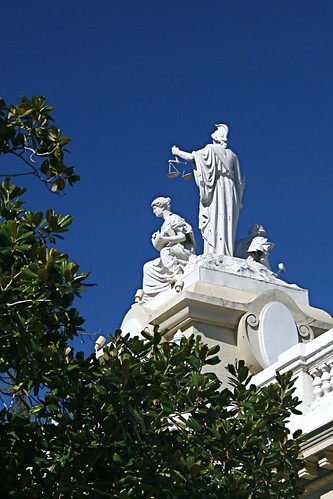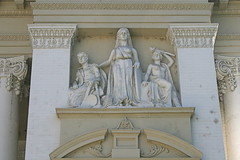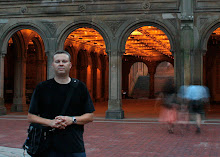In the pic from yesterday you could see the old courthouse reflected in the windows of the new courthouse. More accurately, you could see the statues atop the old courthouse. So today I will show you some of what is on the old courthouse.
Built in 1903, the courthouse is really symbolic of why and how Riverside County was created. Up until 1893 Riverside was part of San Bernardino County and San Diego County. Ray McDevitt, in his book, "Courthouses of California; An Illustrated History" details the fight that led to the creation of Riverside County. "Between 1886 and 1891, the San Bernardino County Board of Supervisors sought voter approval for three successive bond issues for a new courthouse, hall of records, and jail, all to be located in the City of San Bernardino. Each measure failed, in large part due to opposition from Riverside - a rival for the county seat. The board of supervisors, unwilling to abandon its plans, first levied a tax to finance construction of the new buildings on a "pay as you go" basis. Indignant Riverside leaders tried, unsuccessfully to secede. But then the supervisors went one step further - they lowered property assessments in San Bernardino and raised them dramatically in Riverside and other areas where the bonds had failed. This vindictive measure persuaded the legislature to call an election on the question of creating a new Riverside County. The voters approved it overwhelmingly, naming Riverside as the county seat."
The courthouse was designed by prominent Los Angeles architectural firm of Burnham & Bliesner. Franklin Burnham was an accomplished architect, who also designed the Georgia State Capitol. Other Burnham projects in Riverside are the Cressman House (3390 Orange Street), Rockledge Cottage (2575 Madison Street), and the Roosevelt Building (3616-38 University Avenue). The courthouse was not built until 1903 because the same year that the county was created was the same year that the economy went south. Also, the first colony that was established when the transcontinental railroad came in 1869 was Riverside. Judge John Wesley North was an abolitionist from Tennessee who brought a group out to Southern California and founded Riverside. He was ostracized in Tennessee when he talked a crowd out of lynching a black man. A few years after that the first navel orange was planted and by the time the county was formed, Riverside was the wealthiest city, on a per capita basis, in the entire country.
In 1933 there was a major addition. There were other remodelings over the years that included fluorescent lights, air conditioning, and lowered ceilings. The courthouse was closed after the Northridge earthquake. Rather then demolish the building, the county spent $25 million to refurbish and it was reopened in 1998.
To me, it appears that our landscape is decidedly empty when it comes to a sense of history. I for one am glad that they restored rather then built new. When ever I travel back east, I am amazed at the way the history of the different cities is so tied to the buildings and places that are there. In California, so much of our history is built in malls and theme parks. There is a sense of centering and your place in the world when you get to know the history of your place. That is difficult to do when your world is built around a place that does not have any discernible feel of history.
Here are some out takes.
Thanks for looking.
EXIF Data,
Camera: Canon EOS Digital Rebel XTi Exposure: 0.005 sec (1/200) Aperture: f/10 Focal Length: 55 mm ISO Speed: 400 Exposure Bias: 0/3 EV




No comments:
Post a Comment